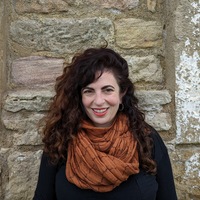Meg Bernstein
Alfred University, Art History, Faculty Member
- University of Massachusetts Amherst, Art History, AlumnusSmith College, Art History, Alumnus, and 3 moreadd
- Meg Bernstein is Assistant Professor of Art History at the New York State College of Ceramics at Alfred University. H... moreMeg Bernstein is Assistant Professor of Art History at the New York State College of Ceramics at Alfred University. Her research focuses on the architecture, sculpture, and spaces in medieval Europe and its echoes. She is especially interested in materiality, haptic perceptions, transhistorical approaches, and the digital humanities.edit
- Professor Meredith Cohenedit
Research Interests:
A Bishop of Two Peoples: William of St. Calais and the Hybridization of Architecture in Eleventh-Century Durham complicates the study of Durham Cathedral by considering it in the context of the Norman Chapel in the bishop’s palace,... more
A Bishop of Two Peoples: William of St. Calais and the Hybridization of Architecture in Eleventh-Century Durham complicates the study of Durham Cathedral by considering it in the context of the Norman Chapel in the bishop’s palace, located adjacent to the cathedral. Both were commissioned by Bishop William of Saint Calais, the second Norman-appointed bishop of Durham. Meg Bernstein argues that the dramatically different formal styles of the two buildings reflect political choices the bishop made following the cultural conquest brought upon England in and after 1066. While the cathedral is recognizably hybrid, recalling Anglo-Saxon formal motifs applied to a Norman plan, the castle chapel is straight out of the milieu of the Duchy of Normandy. In particular, Bernstein argues that the stone capitals from the chapel were brought back from Normandy by the bishop. This article seeks to provide context to the cathedral where it has been lost, and draw conclusions about the chapel’s commission within the context of colonialism.
